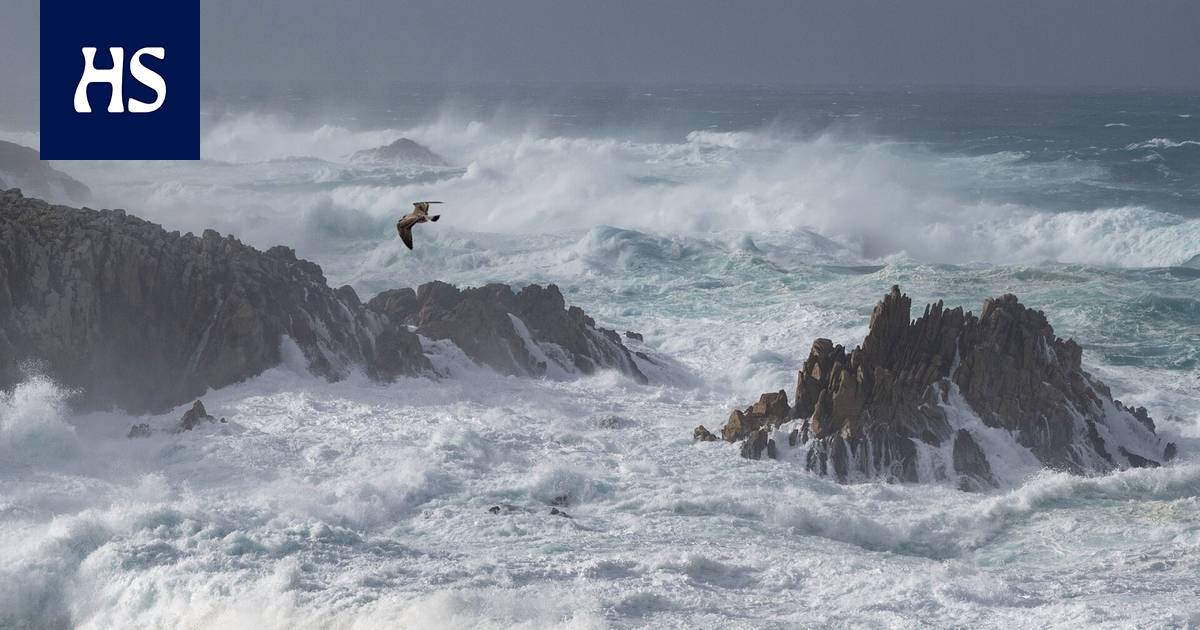“In other kinds under the circumstances, life would definitely be completely different.”
This is what an astrobiologist and docent of plant virology says Kirsi Lehtowhen he is asked what life would be like if it didn’t need water to survive.
“It’s impossible to imagine, because we only know this one life, which is based on the biochemistry that happens inside the water,” he says.
About life that started on Earth four billion years ago is still going on.
All its forms, from unicellular bacteria to trees and blue whales, are based on the same laws. At the center of everything is the interplay of water and coal.
Water is irreplaceable. Organic molecules and hydrocarbons fold into three-dimensional structures with the help of water. They get their proper shape only in water.
DNA, which contains the information of life, would not remain functional without water.
In addition, water transports metabolic substances and wastes in and out of cells. The interaction of carbon compounds and water enables the creation of cell membranes. Cell membranes separate cellular organs from the surrounding world.
“
Webb distinguished a clear sign of water in the planet’s atmosphere.
Water is therefore a prerequisite for life as we know it. That’s why observations of water elsewhere than on Earth often get attention.
The latest example is the Webb Space Telescope’s recent analysis of the gas ring of the exoplanet Wasp-96b. Webb distinguished a clear sign of water in the planet’s atmosphere.
Wasp-96b is a gas planet slightly larger than Jupiter in diameter and about half the mass of Jupiter.
It orbits its star so close that the planet’s orbital period, i.e. a year, takes only three and a half Earth days. Its gaseous surface is scorching hot, over five hundred degrees Celsius.
According to Lehto, the discovery is not very surprising. After all, there is plenty of water in the universe.
Already in our own solar system water has been found everywhere.
Our neighboring planet Mars has polar glaciers. It is thought that there is water in the pores of its surface.
The numerous asteroids and comets in our solar system also contain a lot of ice and organic molecules important for life.
Possible watery places for life can be found in the moons of the large gas planets of our solar system, Jupiter and Saturn.
The icy surface of Jupiter’s moon Europa is covered in streaks.
Jupiter’s moon Europa has an icy crust several kilometers thick. A deep liquid ocean hides beneath the crust. Geysers have also been observed on Europa, which spray water onto the surface of the ice crust.
At the bottom of Europa’s ocean looms a rocky core, from the surface of which organisms that eat minerals could get the nutrients they need, says an astrobiologist and docent of astronomy Harry Lehto.
Second According to Lehto, the object of interest for life is Saturn’s icy moon Enceladus. It also has an underground sea.
The surface of the moon has geysers that spray water, and the Cassini probe has flown through the jets. During the tests, it was found that the water contains organic molecules.
Enceladus is also of interest to researchers, water eruptions have been seen on its surface
A third target is Saturn’s moon Titan. It is the second largest moon in our solar system, which unlike other moons in the solar system has an atmosphere.
Titan has seas and lakes on its surface, but they are composed of methane, ethane, and nitrogen. These substances could be advantageous for the chemistry of the origin of life. Surface seas have not yet been visited.
“However, we have gone to the surface of Titan and the ‘rocks’ found there are water ice. The temperature on Titan’s surface was -180 degrees Celsius. It’s a raw and cold place,” says Harry Lehto.
In addition, according to modeling, there is a sea of water and ammonia under Titan’s surface.
Waterless life is an interesting idea. So far, all known life needs even small amounts of water to survive.
Some bacteria and microscopic bears come closest to living without water.
Bear cubs can stop their vital functions and become almost completely dry. Their structure ensures that the cells are not damaged by drying out. Drying is possible with the help of so-called protective proteins, which prevent damage to cell membranes.
However, in a dry state, these organisms just hibernate. The purpose of the protection mechanism is to help overcome dry periods.
Bears can withstand extreme conditions.
Life therefore, the liquid state of water is essential.
In order for water to remain liquid on the planet’s surface, it must be located in the so-called life zone. The temperature of the planet must be between zero and one hundred degrees Celsius.
In our solar system, only Earth and Mars are located in the life zone, which is at the very outer edge of the zone. Liquid water has not been found on the surface of the planet.
In summer, the Martian equator can be a comfortable 20 degrees. At night, however, the temperature drops to 120 degrees below zero.
Most of the Martian atmosphere is carbon dioxide. Oxygen is only in name. In addition, the atmospheric pressure on Mars is less than one percent of Earth’s atmosphere, so heat can escape.
Because of the thin atmosphere, deadly radiation from space and the Sun can also reach the surface of the planet.
Due to the low air pressure, low temperatures and thin atmosphere, the lakes of water would either evaporate into the air or freeze in an instant.
Many lichens that live in dry and harsh conditions in the mountains are very resistant to drying out.
The lichen’s survival in Mars-like conditions has been modeled on Earth, says Kirsi Lehto.
Lichens and some bacteria have survived in these conditions so that communication has even started.
However, the radiation has turned deadly for them in a few minutes.
The Webb Telescope searches for life in nearby star systems by measuring the spectra of exoplanets’ gas rings.
A planet’s gas atmosphere gives indications of its suitability for life. The gas cycle can also reveal direct signs of life.
Until now, measuring the gas atmospheres of exoplanets has been limited, as measurement from the surface of the earth is difficult due to the earth’s own atmosphere.
However, the gas cycle ideal for life cannot be clearly defined.
Earth has also had many quite different atmospheres during the history of life. The concentrations of its various gases have varied considerably.
In the past, there has been significantly more carbon dioxide in the atmosphere, and a lot of methane around the time of the development of life.
“
“We have an unstable atmosphere that is sustained by life.”
Life was born in anoxic conditions. Oxygen began to flow into the atmosphere due to the effect of newly connected cyanobacteria. Oxygen, on the other hand, burned methane out of the atmosphere.
“If life were to disappear, so would oxygen. We have an unstable atmosphere that life sustains,” says Harry Lehto.
Such unstable gases in the atmospheres of exoplanets would be possible signs of life. However, it is difficult to know what gases extraterrestrial life would produce in the atmosphere or what it would need to survive.
The only points of comparison can be found in the atmospheres of the Earth’s past. From there it is known that life can also survive without oxygen.
Life according to Harry Lehto, it makes the most sense to target the nearest 100 light years at the most.
A light year is the distance that light travels in a year. The diameter of our home galaxy, the Milky Way alone, is about 100,000 light years.
Both water and hydrocarbons, the building blocks of life, are common throughout the universe.
“They are superior substances. I believe that life is based on them, when it can be found somewhere else,” says Harry Lehto.
#universe #abundant #lifesustaining #water #Webb #detected #clear #sign #water #exoplanet









